photo tips
How to be a Happy Wildlife Photographer
30/09/13 10:45 Filed in: Photo Tips
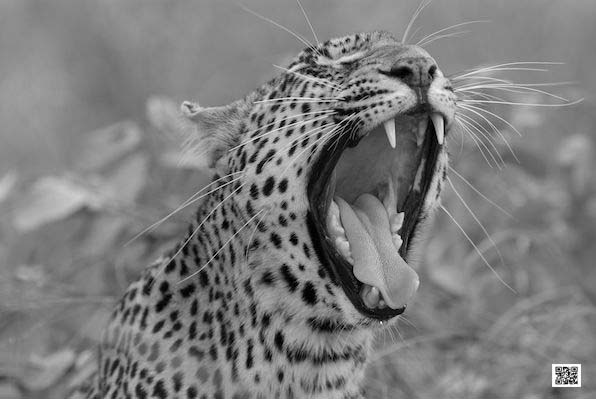
What does one need to be a happy wildlife photographer? The Big Five all photographed within one day on safari or the perfect light with the perfect Big Cat sighting or the front row position with your game drive vehicle to see the Great Migration? These are all perfect conditions to be a happy wildlife photographer, but they do not make happy.
A happy wildlife photographer is happy inside him/herself. Unrealistic expectations can make that one is very unhappy with anything. Expecting nothing and being prepared for everything is a great starting point to end up with the most amazing pictures of anything. And don’t expect from yourself to photograph like somebody else, just be yourself and photograph the way you do. It only counts that you love you pictures and that will make you a happy wildlife photographer.
Happy wildlife snapping!
Ute Sonnenberg for www.rohoyachui.com
Wildlife Photo Tip: The Eye in Focus
29/09/13 09:06 Filed in: Photo Tips

Wildlife photography is a lot about patience and waiting for the moment that something happens. Safaris with wildlife interactions are the best for photography, but when the action eventually comes it can also be a challenge.
Action in wildlife photography means that all happens very fast. The animal moves very fast and the light is changing very fast to, when e.g. a leopard is moving around in a tree, going in and out of the shade very quickly. That means the pictures tend to be blur.
There is nothing wrong with a blurry picture. It supports the movement and looks very interesting, but when all is blur it is not nice anymore. Our eye needs to focus on something and an entirely blur picture doesn’t allow that. We feel uncomfortable and don’t like the picture.
Make sure at least one eye is in focus. We connect usually with the eye of a photographic subject and if that is out of focus, it feels like it hurts our eye. Is the eye in focus, the rest can be blur and full of motion. It will be a lovely and most likely very interesting picture.
Happy motion snapping!
Ute Sonnenberg for www.rohoyachui.com
Get this useful design tool for your photo creations
27/09/13 14:16 Filed in: Photo Tips
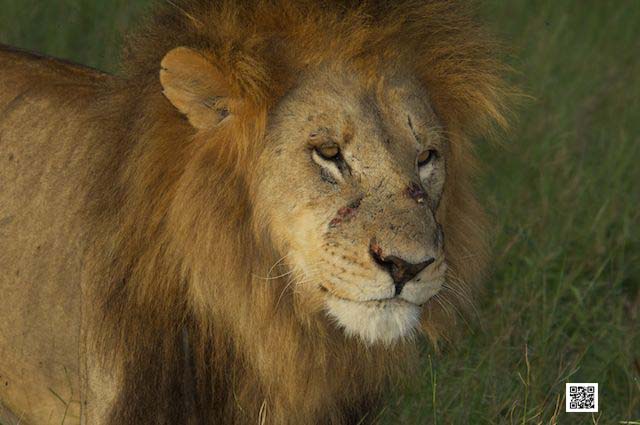
The hobby photography or wildlife photography does not end with taking the pictures. Once back from photographic safari, a holiday on the beach or from a friend’s wedding, the post-production starts. We make photo books, calendars, cards, posters, fine art prints and many more creations where we use our photographs.
There are templates that help us with it, yet even with templates sometimes we struggle to find the right picture for a page in a book or a collage or some other occasion we want to create something with a picture. Often the problem is in the not matching colors of the picture with the background color or the color of illustrations or even the color of the text. Matching the colors can be a nerve-racking process, but it doesn’t have to be like that.
There is this lovely tool http://www.pictaculous.com/. This online tool helps you to find matching colors easily. Just upload the image and the tool does the rest. Try it. Its really easy.
Happy photo creating!
Ute Sonnenberg for www.rohoyachui.com
How good are your wildlife photos really?
25/09/13 09:07 Filed in: Photo Tips

Maybe you have been on a photographic safari in Africa, you get home and your photos sorted and after hours behind the computer and a couple of hundreds of images further you start doubting your own photographer talent and skills. But should you?
Do you compare your wildlife photography with what you see on National Geographic or in the magazines? If you do so, be conscious that all these images are photoshopped and you can achieve similar results by photoshopping your images to.
But lets look at the essence. Do you love your images? Do they appeal to you? If you answer both questions with a yes, your images are great, because they are the images you love. They capture special moments of your safari, intimate moments with wildlife and nature and they will take you back to your adventure whenever you want to experience it again. Love your images; they are your memories.
Happy wildlife photography snapping!
Ute Sonnenberg for www.rohoyachui.com
4 Calls to Action for Your Wildlife Photography
23/09/13 16:33 Filed in: Photo Tips

Call to action is a term from marketing, but it can be useful for photography as well, as it is often tempting to postpone the stroll in nature until tomorrow and tomorrow and ….
Go now. There is no budget needed to go into the garden, to the park or on a stroll in the woods. It is refreshing, calming and recharging and practicing is always good for your wildlife photography. If you consider to go on photographic safari, the go now can also be an inform now with some search time on the Internet or in the bookstore. Whatever it is, your wildlife photography will benefit.
Buy now. This can be a tricky one, but can be a last push to get that zoom lens you need to properly photograph birds or the far away lion.
Share this. That is a lovely one for photography. Sharing your photographs, experiences and knowledge helps others and yourself. You always learn a lot yourself when teaching others.
Start your free trial. This means usually that one has to pay from a certain moment, but not with wildlife photography. Wildlife photography is always for free as nature is for free and wildlife is everywhere. If you haven’t started wildlife photography yet, try it and have fun.
Ready to go?
Happy wildlife snapping!
Ute Sonnenberg for www.rohoyachui.com
Why Share and Collaborate [in Under 100 Words]
22/09/13 15:18 Filed in: Photo Tips

We do not exist isolated; we are connected to the world around us. We can try to do all ourselves, but it will not bring us far.
By sharing and collaborating we grow and let grow, we learn and teach at the same time.
No matter what and where, with our team colleagues at the office, our family, our travel companions on photo safari, the other students on wildlife photography course, the people on the plane and the people at the other end of the world we are communicating with online, we constantly share and collaborate in order to make things work.
Sharing and collaborating also make you a better photographer. Use it.
Happy teaching and learning!
Ute Sonnenberg for www.rohoyachui.com
How to get innovative ideas for Photography
21/09/13 08:48 Filed in: Photo Tips
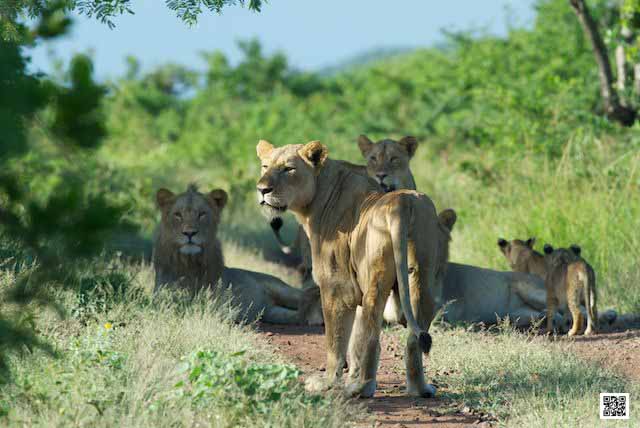
Photography needs constant inspiration and ideas to grow and explore new fields. One source of inspiration are great photographers like Peter Beard and Helmut Newton, the one especially for wildlife photography and the other for fashion. Yet both give great ideas for all kinds of photography, showing techniques and compositions.
Movies and entertainment are also a great source of inspiration. How do they do the lighting and what colors are they using? This can reflect in your own photography and give it a complete new turn.
Nature itself is a fabulous source of inspiration and ideas. Only look at birds with their diversity of stunning colors and patterns. And for photographic safari lovers the BBC nature series are amazing with their great shots of fantastic wildlife interaction.
But ideas can come from anywhere, from as divers as children playing, innovative adverts, natures seasons and office buildings. Think out of the box and discover photographic potential in anything.
Happy innovative snapping!
Ute Sonnenberg for www.rohoyachui.com
Is Photography Your Best Friend?
20/09/13 15:30 Filed in: Photo Tips
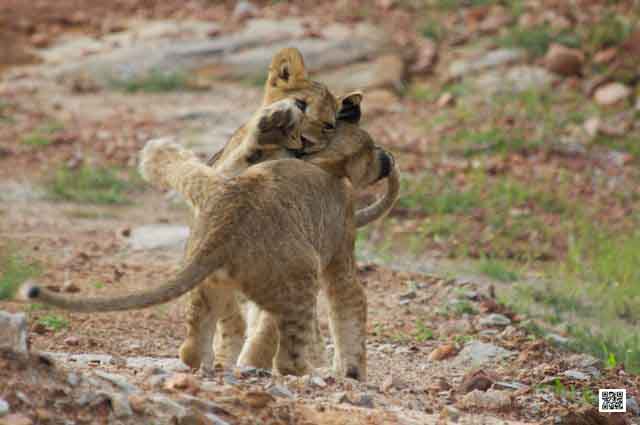
What is a best friend? Your best friend is always there when you need him/her, listens, comforts you, inspires you, enjoys fun with you, travels with you, rests with you, enjoys nature with you and loves wildlife with you.
And isn’t photography all that? Are you your photography’s best friend to? Maybe it would be an idea to take every now and then a picture just for your photography, to say thank you as a best friend. Your camera might appreciate that to.
Happy photography loving snapping!
Ute Sonnenberg for www.rohoyachui.com
Why you need more than 1 camera
14/09/13 12:32 Filed in: Photo Tips

Wildlife photography takes us home to nature, lets us feel the outdoors and capture its beauty. There is probably no other photography that is in the same way exciting and calming as wildlife photography. Photographing the Big 5 on safari is very exciting, impressing and stimulating and at the same time sitting with a leopard for a morning is very calming and makes us connect with nature again in a quiet way.
It is never boring. A day in the bush is never the same. The animals have always surprises for the observer and photographer. They make us see and grow in photography with every minute we spent with them and they rarely do what we think we want them to do, which is very refreshing too.
Get your dose wildlife photography every day. Wildlife is everywhere, in your garden, in the park and even in the city. Just start seeing them and capture their magic.
Happy wildlife snapping!
Ute Sonnenberg for www.rohoyachui.com
How to Master Hazy Light
11/09/13 06:19 Filed in: Photo Tips

There is a reason that game drives on photographic safaris are in the early morning and late afternoon. One reason are the animals. They are more active in the morning and afternoon when it is not that hot and the chance of seeing wildlife interaction is bigger.
Another reason is the light. The so-called golden hour with the best light for wildlife photography is in the morning just after sunrise and in the evening just before sunset. In between, the light is challenging. Already from about 9 am the light becomes too bright and hazy with no contrasts and too much reflection on the animals and landscape. One doesn’t need to take a photo to see it, it just looks like that for most of the day.
The normal exposure settings you use and can use during the golden hour cannot master this challenging light. You got to adjust. One option is adjusting the aperture. Just go 1 or 2 f-stops higher to get more saturated colors, but be careful not to overdo it. Another option is to work with exposure compensation, especially when photographing animal close-ups and their faces are too bright with no texture. This works also well with elephant and rhino. Their grey skin reflects a lot and on the picture it looks very shiny.
Unfortunately there is no way in practicing that before going on safari. There is no other place with this light and you will agree, once arrived for example in the Masai Mara.
Maybe one more advice. Don’t expect that what you usually do with your photography will work in the bush. Be prepared that all will be different. This will help already to avoid frustration.
Happy wildlife snapping!
Ute Sonnenberg for www.rohoyachui.com
What is a Photography Break?
08/09/13 17:52 Filed in: Photo Tips

What if you need a Sunday urgently, but its only Wednesday and you feel already exhausted. Take out your camera or cell phone camera and start photographing whatever you see around you. You don’t even need to leave the desk, but of course it would be nicer to just step outside and photograph what’s going on in the streets, in the park or just in the building you work in. Open your eyes, look out for the light and start seeing all the inspiration surrounding you. Maybe your photography break lasts only 15 minutes, but it will refresh you and recharge you with new energy and strength to make until Sunday.
Of course there are also the very much-needed holidays, the longer breaks to recharge and relax. Turn them into wildlife photography breaks, photographic safari breaks, street photography breaks, sport photography breaks or relaxed beach sunset photography breaks. Add photography to make sure you get most out of it.
Happy Sunday snapping!
Ute Sonnenberg for www.rohoyachui.com
Why Ideas Matter
27/08/13 12:30 Filed in: Photo Tips

How often do we sit over a blank sheet of paper, pen ready to write and hoping for ideas to flow? It can be the shopping list for the coming weekend, the packing list for a holiday, the paper for school, the motivation for a job application or the preparation for a meeting. The idea is what we are waiting for to make whatever we want to do a success.
And the process of finding ideas seems to be the same for all purposes. What do we do when the idea doesn’t want to come? We google recipes, travel destinations, photographers, leave through magazines and books until we have enough inspiration for ideas to start flowing. Without ideas, our life would be always the same and pretty boring.
Take wildlife photography as an example. Either you are someone who has been on safari many times or someone who is going for the first time, you want to have ideas about what to photograph and how. The idea can be to sit on the game vehicle and wait what comes or discuss with the guide to look for the Big 5 with the aim of photographing a portrait of a lion, rhino, elephant, leopard and lion within one day … or two or three. You will have somehow an idea what you want and how the pictures are going to like. If the animals are not cooperating, be open for a plan B and have ideas about flowers and beetles.
Got it? What are your ideas for this week’s photography? What do pictures do you want form this week?
Happy snapping!
Ute Sonnenberg for www.rohoyachui.com
Popular Camera Settings 2012 & Their Meaning(lessness)
31/12/12 18:07 Filed in: Photography & Art

Reuters made a list of what they think the best photographs taken in 2012 with a whole range of information including camera settings.
Now the photography enthusiast and Reddit user hallbuzz made a list of all the camera settings of the 95 images from the Reuters list including camera brand, lens type, shutter speed and f-stop. Then another Reddit user mathiasa turned all this information into charts. See the charts on petapixel.
When looking at the charts one could be tempted to think that in order to be one day on the list of the 95 greatest photographs of the year, chosen by Reuters, one just can buy the equipment mostly used and the settings mostly applied. But is that so?
How often do you shoot a sports event like the Olympics? Are the best photographs shot with a Canon, rather than with a Nikon?
What are the charts tell? Photographers of press agencies get equipped by their employer and the employer chooses a camera brand of good quality he can get a good deal with. Same for the lenses, reflecting also in the f-stop stats. And from there it’s a bit of everything, depending on subject and location.
So, what does this example of stats of popular settings tell us? There is nothing like a popular setting one can just use, because others do. Camera settings always depend on the light and nothing else.
Happy snapping!
Ute Sonnenberg for www.rohoyachui.com
Safari Story: Leoaprd Teens and a Stressed Mom
29/12/12 18:02 Filed in: Safari Story

We had planned to stay the whole day out, with packed breakfast and the lodge would bring us lunch later. We were on a photo safari in the Sabi Sand in Kruger National Park in South Africa, the heaven for leopard photography lovers.
Staying the whole day out in the bush has the advantage that you can stay with the animal when you eventually found it and follow it the entire day. We had found a female leopard. She had two pretty “old” cubs of about 18 months old, two boys, still staying with her. Usually the cubs have to live on their own by this age, but the boys seemed to enjoy their mother’s care and were in no rush to live on their own and do all the hunting themselves. The mother is a good hunter and also this morning she had a kill hoisted in a tree. But there was no sign of the boys. After she had fed on the kill for a while she started calling for the boys. No response. She started walking away from the tree looking and calling for the boys. The calling is a gentle sound, heard by the cubs and telling them mom is calling and expecting response. But nothing. The mother kept going and calling and after about one hour doing so, she seemed to have enough. Now she was really calling, a loud, strong leopard call that made clear she will take no nonsense anymore. And suddenly one of the boys popped up, just a few bushes away from her approaching her in apologies and trying to sooth her anger. After a moment of accepting the cubs attempts to make it up again, they wandered off to the tree with the kill.
Ute Sonnenberg for www.rohoyachui.com
Photo Safari Essentials eGuide
Review Time: Photokina's New Cameras
02/10/12 16:54 Filed in: Photo Tips | Photography & Art

All big camera brands announced their new models at the Photokina and now the first reviews are available.
The most interesting reviews might be the ones on the full-frame entry level Nikon D600 and Canon D6, just good to have them to compare the two “similar” new camera models of the two big brands. Check out PetaPixel’s Hands on with the Nikon D600 and Hands on with the Canon 6D.
Of a different league is the Leica M. Also here a Hands on with the Leica M by PetaPixel to get to know her better before making a decision to buy one.
Also available so far the PetaPixel hands on review of the Fujifilm X-E1, the Fujifilm XF1 and the Samsung Galaxy Camera.
Surely there will be more reviews coming during the following weeks and if you think about getting one of the new camera models, try to test them at your camera store before buying one. The camera needs to suit you and no review can tell how the camera will feel for you. Only you know, if a camera works for you and what you want to do in photography.
The new camera models are definitely an inspiration and make one wondering how cameras will be in the future. Until future arrives lets enjoy what the present offers.
Happy testing!
Ute Sonnenberg for www.rohoyachui.com
Photokina: Camera Giants & Their News
24/09/12 11:06 Filed in: Photo Tips | Photography & Art

It is over for this year. The Photokina has closed her doors and photography lovers are still breathless from al the camera news that came over them, maybe secretly thinking already of buying one of the new models.
Probably the most bespoke new cameras are the Nikon D600 and the Canon 6D. Both are entry level DSLRs with a full-frame sensor and it makes complete sense to give them almost the same name. If you doubt which one to prefer, have a look at the sensor test from DxOMark and you will see that the result is not surprising.
While the Nikon D600 and the Canon 6D still have a reasonable price, other brands like Leica and Hasselblad introduced more pricy new camera models. They are the Leica M and the Hasselblad Lunar. Well they are great cameras, with an even great price.
For a nice overview and to compare the new camera models from the Photokina, have a look at the WEX page. More detailed tests will only be executed now, so more information on the new cameras will be available soon.
Fortunately Christmas is coming soon and Father Christmas might make one or the other camera dream come true.
Happy snapping!
Ute Sonnenberg for www.rohoyachui.com
How to Re-Imagine Photographic Opportunities
06/09/12 11:45 Filed in: Photo Tips | Photography & Art

Have you ever had moments that you felt the urge to photograph, but had the feeling that there is nothing around? Like days without sun, again the same garden, not the right equipment to capture that or thoughts like ‘this is anyway not going to be good”. In these moments we might do a lot of imagination, but not the kind of imagination that stimulates us to see and shoot. We might imagine only the downside of everything.
How can we change that? Well, simple enough through photography. We just need to get through this wall of negative imagination and it doesn’t need to be an effort. Just take your cell phone, most likely you don’t even have to move for that, because it’s always with you and start shooting away. Maybe choose one of your photo apps and click and see what comes out of it when photographing your TV. Without even noticing you will be drawn into your photography and the silliest subject will become highly interesting and arty. You just started seeing again and your imagination will be stimulated to artistic heights.
Try it, also when being in the office
Ute Sonnenberg for www.rohoyachui.com
Photokina rumors: The Canon 46MP monster

It seems like the megapixel monster was unleashed and Nikon and Canon are chasing Hasselblad. For a long time Hasselblad was the one with the monstrous amount of megapixel cameras, but recently Nikon caught up with them with their D800 and will Canon eventually race past both?
There are rumors that Canon will launch a DSLR with 46 megapixel at the Photokina in Cologne in September. But will it or will it rather stick to 22 megapixel? One needs the right lenses in order to get the best out of such a megapixel monster. Users of Nikon’s D800 are already carful with yielding this amazing camera.
We will know soon. Do we need such a thing?
Ute Sonnenberg for www.rohoyachui.com
The Only Limitation for Your Photography is You
29/08/12 17:19 Filed in: Photo Tips | Photography & Art

What do you think about your own photography? When you show your images to others, do you immediately start commenting them why you did this and this and excusing something you think could have done better?
Our photography shows always something of us and it is for ourselves like looking into a mirror when looking at our images. And if we do not like certain sides of ourselves, we might start limiting ourselves in our freedom of photographing what ever comes up or we wish to retouch our photographs in order to cover the flaws we think we have. But like with thinking our nose is skew and everybody will notice, we might be the only one seeing a flaw in the photograph. And what is actually a flaw? Nobody notices a skew nose in a fascinating personality and a blur photo can be the most fascinating image, magnetizing a room.
When you love a photo, it is a great photo and your heart is always right. Listen to it and you will enjoy the freedom photography has to offer.
Ute Sonnenberg for www.rohoyachui.com
How to Visualize Your Gut Feeling
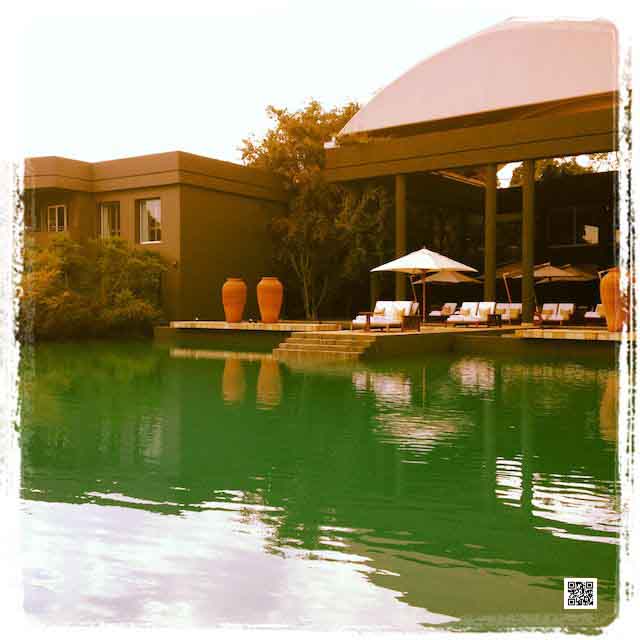
Have you ever had the feeling that something would happen, like your best friend would get the job he was so worried about and then he did or you did get the questions in the exam you were so afraid of getting, but refused to listen and learn for it? A typical reaction is that we say: I knew this would happen. So when you knew it would happen, why didn’t you do anything with that knowledge?
Our gut feeling is not something we can touch, smell or taste and it is not visible either. That makes it difficult for us to rely on it and trust it. Photography can help us a great deal in making it touchable and visible. We can photograph our gut feeling, not by photographing ourselves, but by just shooting away when we have the feeling that our gut feeling wants to tell us something and we don’t get it. It will make us photographing exactly the subjects that represent what it is trying to tell us. We just need to learn to trust, see and read the information in the image.
The image is the visualization of our gut feeling and when we print it, it becomes touchable as well.
When you try it, do not think about the photo or subject, thoughts will distort the visualization. Shoot with your gut or better call it heart. Be cautious with quick interpretations of what is in the image, distracting thoughts might do that. You will rather feel what you see. If you wish to learn how to use this tool for daily decisions, a training called Intuition Training is available.
The difficult part is not the photograph or the gut feeling or the heart. Thoughts can be a distorting factor and it is the art of clearing the channel from these kind of thoughts one got to learn.
Ute Sonnenberg for www.rohoyachui.com
Would you like to do a Webinar?
22/08/12 17:15 Filed in: Photo Tips | Photography & Art

Photography is an inspiring medium and we all seem to love it and do it almost every day. There seems always to be some kind of discussion going on around photography, questions asked and opinions shared. How would it be to do that during a webinar?
If there is interest in doing a photography webinar, just leave a message to this blog post.
And if yes, what would you like the webinar to be about? What kind of photography subject would you like to hear and talk about?
You are welcome to share your thoughts and to inspire. Thank you!
Ute Sonnenberg for www.rohoyachui.com
What the Olympic Sports teach Photographers: Boxing
30/07/12 13:30 Filed in: Photography & Art
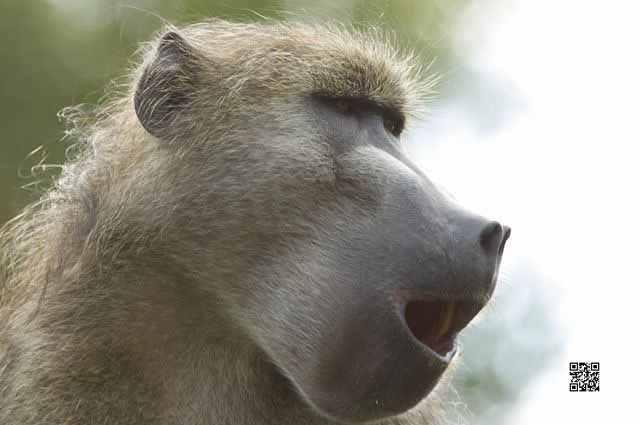
Don’t you feel sometimes like boxing your way through thick walls to success? Think of your footwork and stay flexible and be fast in response, move quickly and protect yourself. Don’t give up to easy, you can get up and win. Be careful with your health and don’t take unnecessary risks. A picture of people shooting with guns looks the same 50 meters behind the front line. You don’t want to be famous, because you were knocked out.
Ute Sonnenberg for www.rohoyachui.com
How to Photograph Leopards
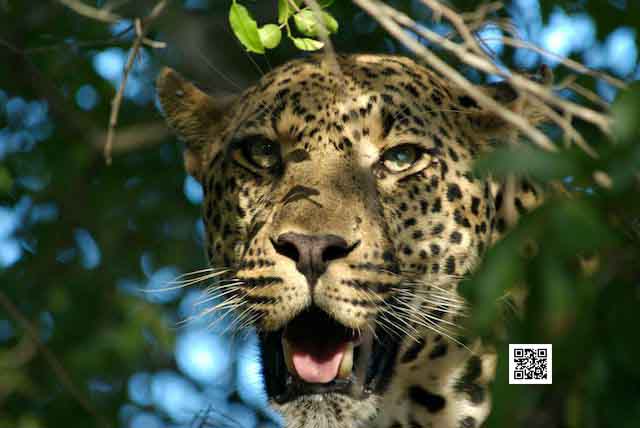
It might sound far-fetched, but Quantum Physics is the starting point to understand and photograph leopards. Everything is made of the same energy and everything is connected to everything else is an essential lesson from Quantum Physics, that applies to us as it applies to leopards, a coffee mug and the car we are driving in. Because we are all made of the same energy, we are also all connected and communicate on the energy level all the time, mostly without being conscious about that, although we use phrases like “we are on the same wavelength” with somebody or not. So somehow we know that we are communicating on frequencies like radio channels and some people can receive the signals and some don’t or receive only distorted messages. That means that the energy we are made of vibrates or moves in different frequencies, higher or lower frequencies, faster or slower. We might experience situations where we immediately have a good “click” with somebody. Most likely this persons communicates on energy level on the same frequency as we do. When we experience a situation that we find it difficult to be in the presence of a certain person for too long, because we start to feel tensed and restless, like pressure is building up, we might have an encounter with somebody of a high frequency energy and our energy frequency finds it hard to adjust to the same level. In the other direction to a lower frequency the adjustment is easier and mostly not experienced as demanding or unpleasant. But what does all that have to do with photography and especially leopard photography?
An easy answer could be, wait until you look one into the eyes, but it is helpful to know what happens when you are in the lucky position to be near a leopard and able to spend time with the animal. The difference in photographing wildlife in general and leopards in particular is the very high frequency energy this incredible cat has. Being conscious about that helps a lot when photographing them.
Imagine you are on a game drive and suddenly there is the leopard you were looking for already for days, right in front of the vehicle on a termite mount. Now just shoot away. Don’t think. Let the adrenaline from the excitement out and also take the pictures you can get, before the leopard possibly disappears. This moment might take a minute or two. You will feel when the excitement has settled and you will sit more relaxed in the vehicle. First thoughts of how to photograph the leopard properly will pop up. The next thing might be a feeling of impatience and negative thoughts about the light, the not doing anything animal, chaos with the camera settings, maybe a bit cursing, annoyance and eventually anger why we are still here with this leopard, enough leopard. This is a very important moment. When you decide to leave the sighting, you will miss the chance to connect with the animal and to get the most beautiful photos. All the negative thoughts and the physical reactions of feeling uncomfortable are caused by the difference in energy vibration/frequency. The leopard as a high frequency animal is just sitting there and doing nothing, only sending out on his/her frequency and your energy is trying to tune in to the leopards energy frequency. This tuning process causes the uncomfortable feeling. It will disappear as soon as you are tuned in and from there its as easy as what to photograph this amazing animal and to get the most beautiful leopard images.
Be patient. Stay with the animal and give yourself the time to tune in. As soon as you are tuned in on the leopards frequency the whole “energy situation” on the sighting will calm down and all present parties will connect on the same level. The leopard will start doing his/her thing and the most incredible photo opportunities will occur.
Try it at home with your cat and get trained for the big cat!
Ute Sonnenberg for www.rohoyachui.com
Recipe for a Soul Feeding Photo Adventure

Ingredients
1 or more camera(s)
1 or more lens(es)
1 or more fully charged battery(ies)
1 or more memory cards/films
1 laptop or other backup medium
1 or more power adapter(s)
1 card reader or cable for image upload
1 or more places to stay
1 or more reliable guide(s) depending on destination
1 or more camera bag(s)/backpack
comfortable clothes for all possible weather conditions
food & beverages
well planned logistics and accommodations
visas and permits if necessary
maps/GPS for navigation
well considered security preparations and backup plan
plan B if plan A cannot go through
emergency plan
passion, inspiration & a high spirit
Method
Listen to your heart when deciding on the destination of your photo adventure; the park in your town, your grandmother’s garden, the beaches of Hawaii or the African savanna, no matter how close to home or how far away, follow the choice of the heart.
Take all technical ingredients, check them, clean them and decide on the cameras and lenses depending on the destination and subject. When you made your choice put the technical equipment in the camera bag or backpack.
Add the environmental ingredients. Make sure that everything is organized and set in a way that you are safe and comfortable.
Finish with putting the cherry on the cake; the ingredients passion, inspiration and high spirit.
Enjoy your soul feeding photo adventure.
Ute Sonnenberg for www.rohoyachui.com
How to Organize Your Loads of Photo Safari Images

Digital Photography is a great thing. It makes us shoot away, not thinking and worrying too much, just snapping and enjoying this incredible hobby or profession. But there is a little downside. How to handle all these images?
Many of us are struggling with this part of photography and when you’ve got down the road for a while with now good idea how to do organize your images, it becomes more and more frightening to start doing it properly and organizing the archive.
Here some tips that might help getting some structure into the huge amount of images we are taking and taking away the fear of doing it.
Reflect & Anticipate.
Before you even start taking images think of how you want to find them back and/or think of how you usually find things back. Everybody has got his/her own way of thinking and remembering, the way we go through the drawers of our brain for all sorts of things. Some have a photographic memory others are good with numbers. There are plenty of different ways of thinking. Reflect and identify your way of thinking and remembering. You might like to store the images chronologically by making folders like “day 1 of photo safari”, “day 2 of photo safari” or you rather like to make folders per subject like “lion”, “leopard”, “cheetah” and “landscape”. Only you know what suits you best and fits your thinking patterns. Reflect on that and make an important first step to organize your images.
Then anticipate. When you are for example very lucky and on a game drive where you see five different leopards, you want to be able to know afterwards which images where of which leopard. Take an image of the sky or another landmark that does not fit into the sequence of the leopard shots before you start photographing the next leopard. It will tell you later that this was the other leopard, leopard number two and you can put him in his dedicated folder. It works also very well when photographing for example dog shows or horse sports events. It will save you lots of time and nerves when going later through your images to find the one your friend is asking for.
Structure the image upload to your computer.
When the moment comes to upload your images to your computer you know already how you want the images to be organized, because you did the reflection and the anticipation beforehand. Now comes again a bit anticipation. Before you start uploading your photos, make the image folders on the computer first. That will prevent the leopard images going automatically into the big folder of all holiday photos, but directly to where you want them. When you have a folder “photo safari”, make a subfolder “leopards day 1” or only a subfolder “day 1”, whatever suits you best to have the structure to find them back later set.
Upload and backup.
Your images are on your computer, nicely organized and you can find everything easily when you need it. Now comes the next and final step, the backup. The general rule is that you should have 2 backups and one backup off site. The backups are usually done on an external hard drive, to prevent image loss due to computer problems or theft. Create the same folder structure you use on your computer on the backup hard disks, because your thinking stays the same and you want to find things back. The off site backup can also be a hard drive with your images that you store in a safety deposit box at your local bank. An alternative is to store your images off site is the cloud, but when you shoot big files that will only apply to your very best images. Otherwise it will take forever to load them to the cloud and take a lot of space.
Now you are all set and organized. No worries anymore and free brain space to think about nice photography opportunities instead of how to organize and find your photos again.
Easy software for organizing images is Aperture. I don’t know how it works with Lightroom, but its also used by many people.
Enjoy a photo database without worries and keep snapping away!
Ute Sonnenberg for www.rohoyachui.com